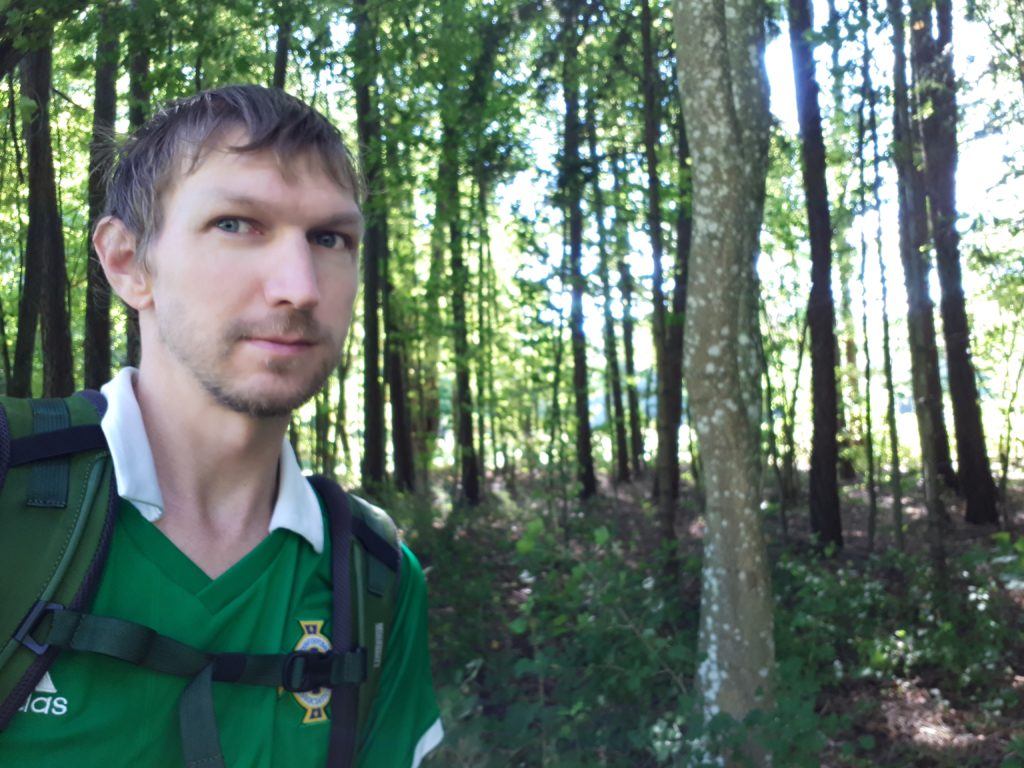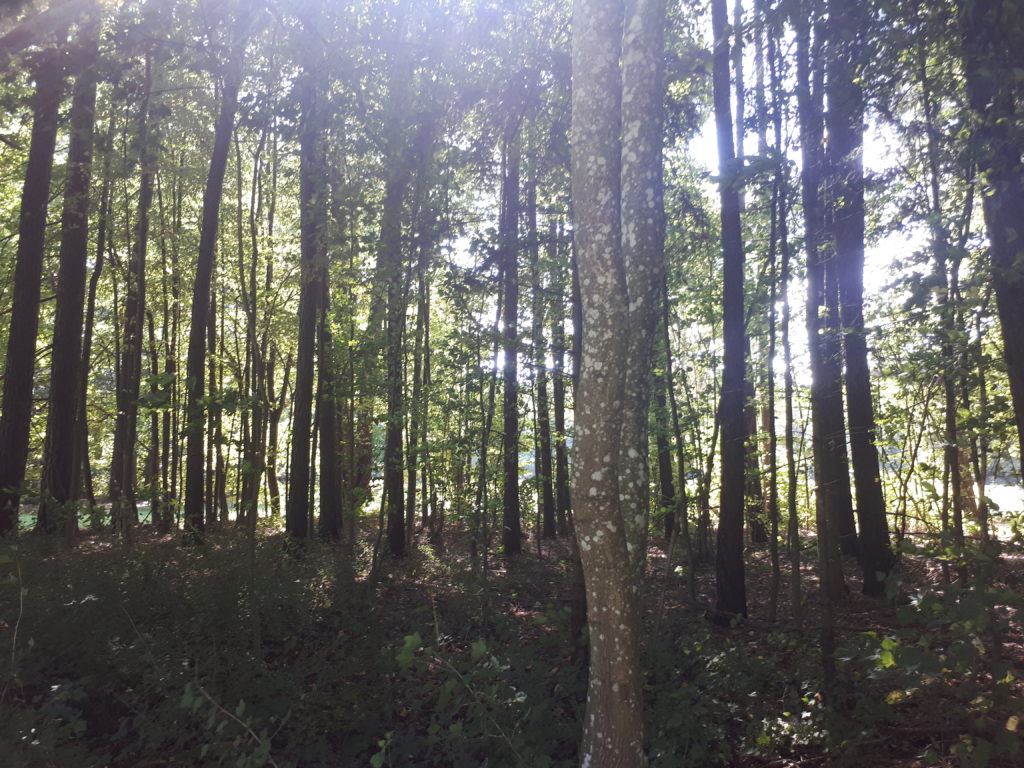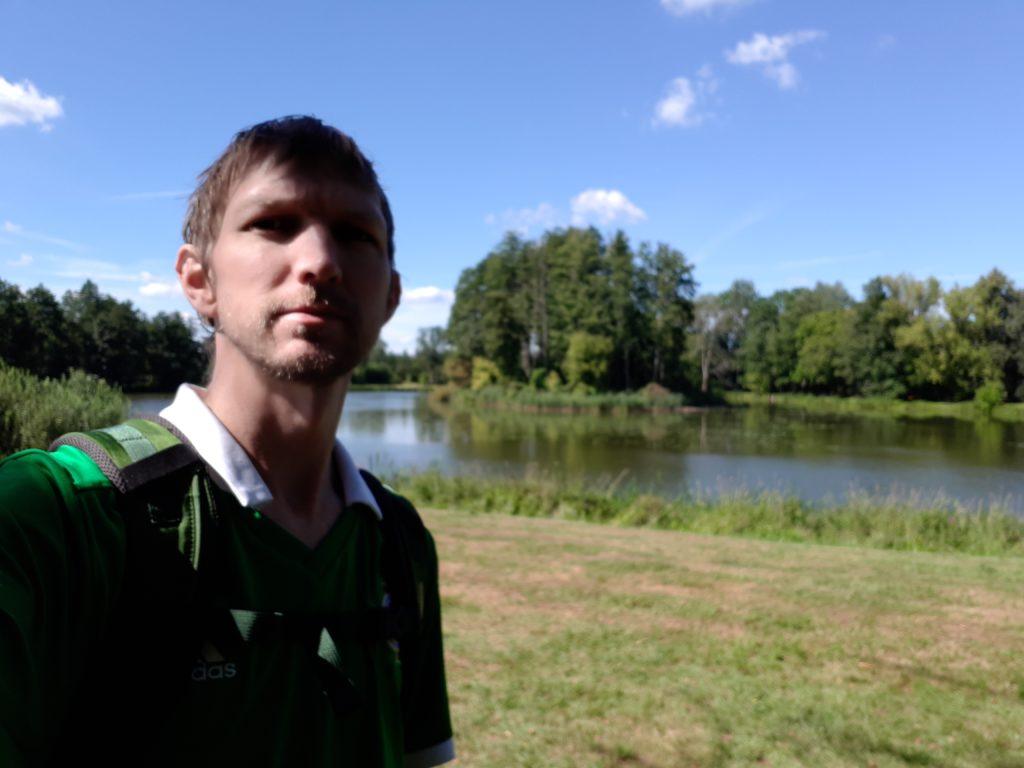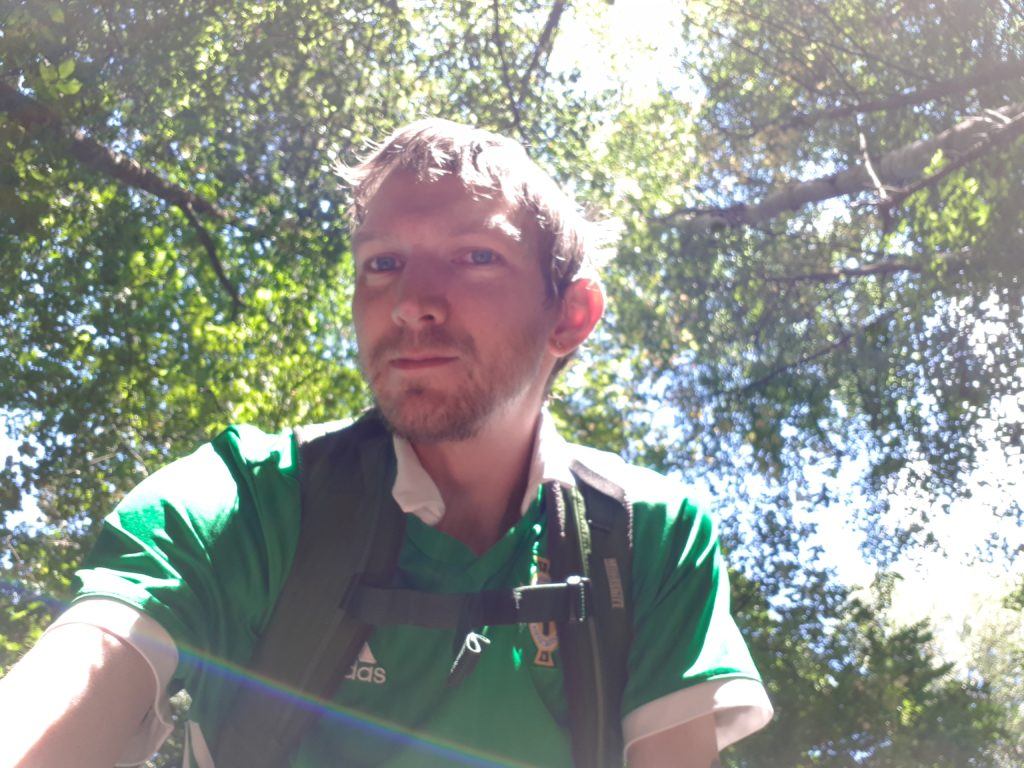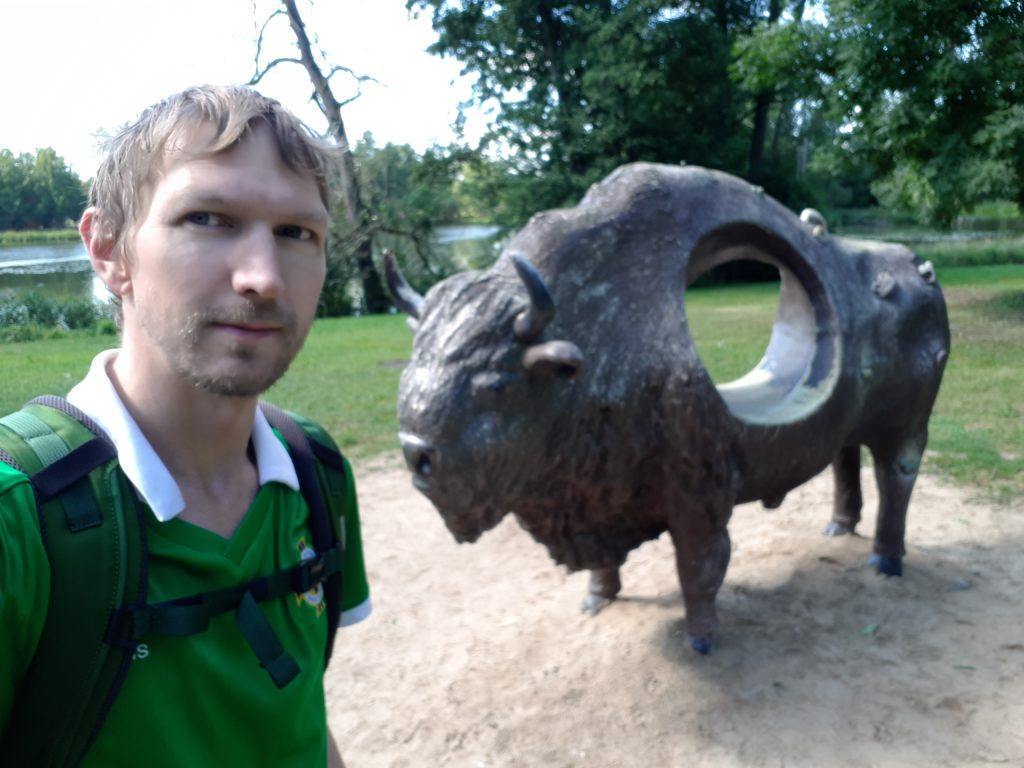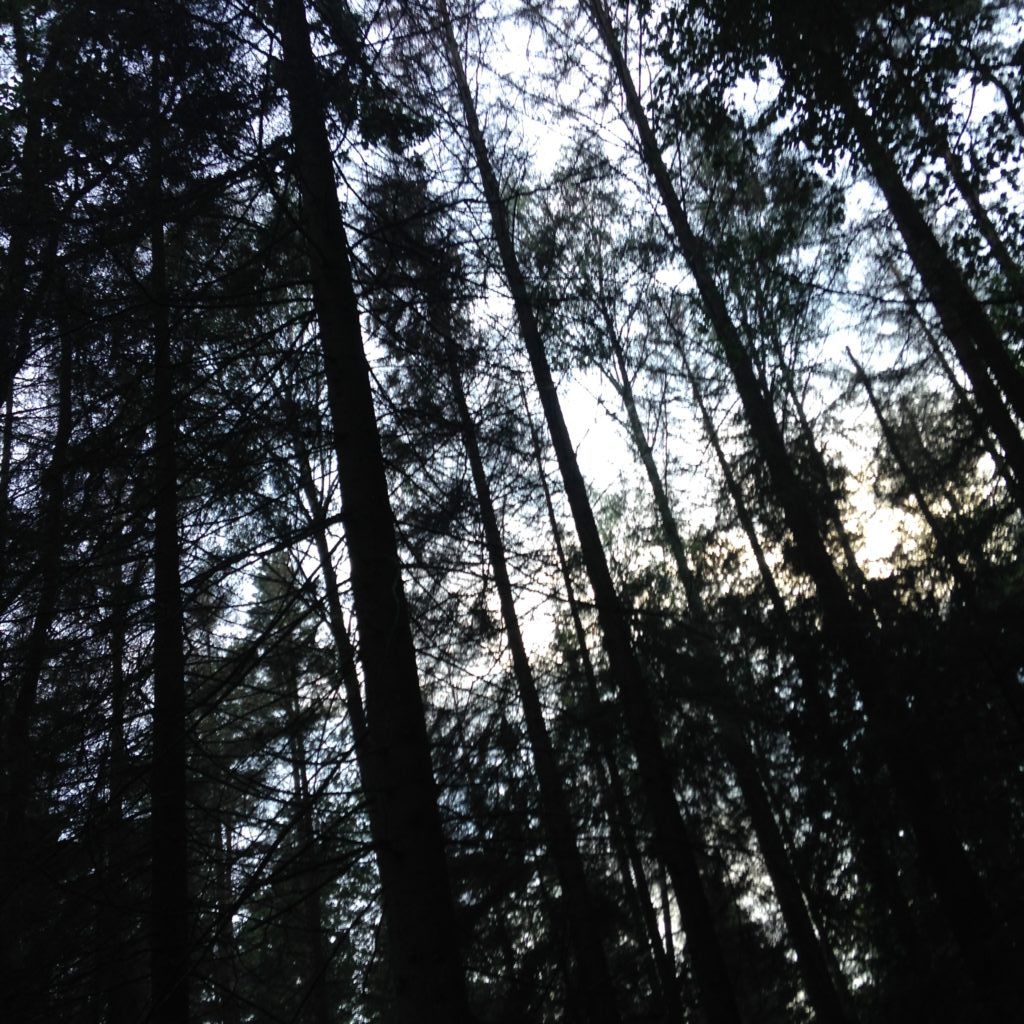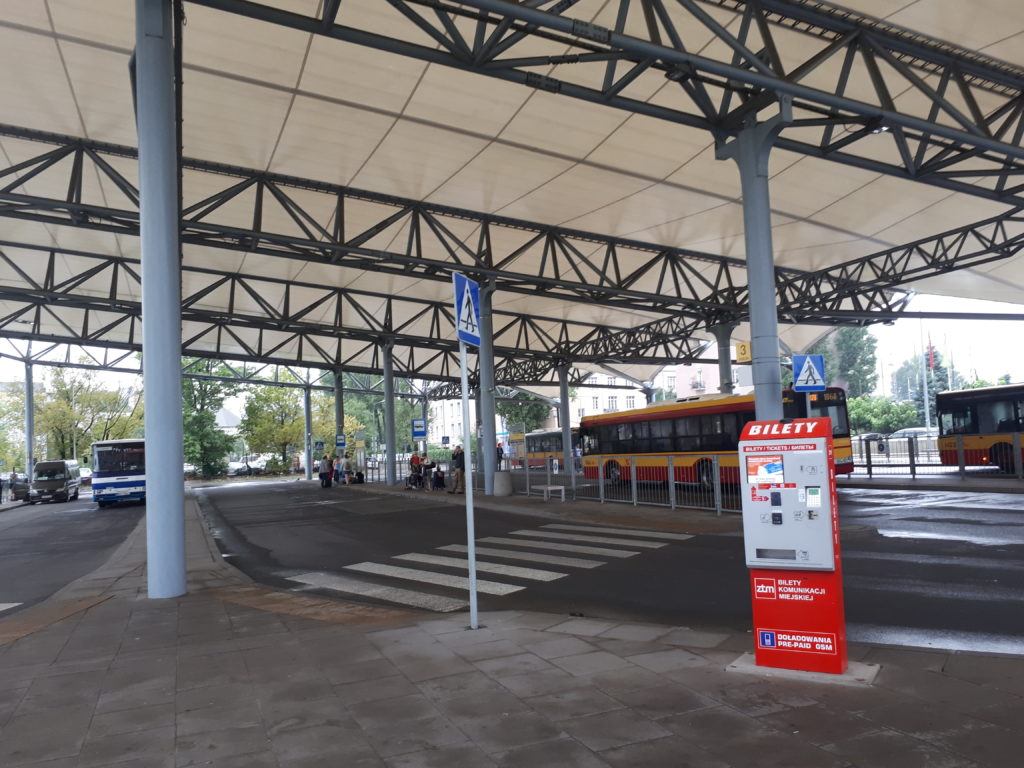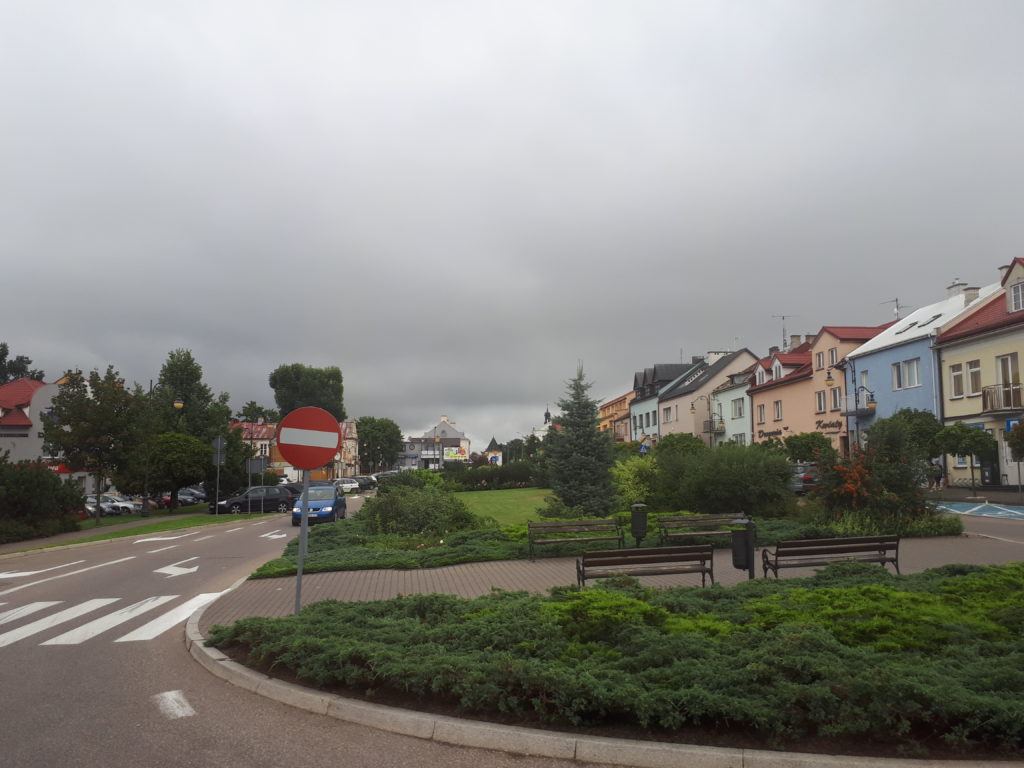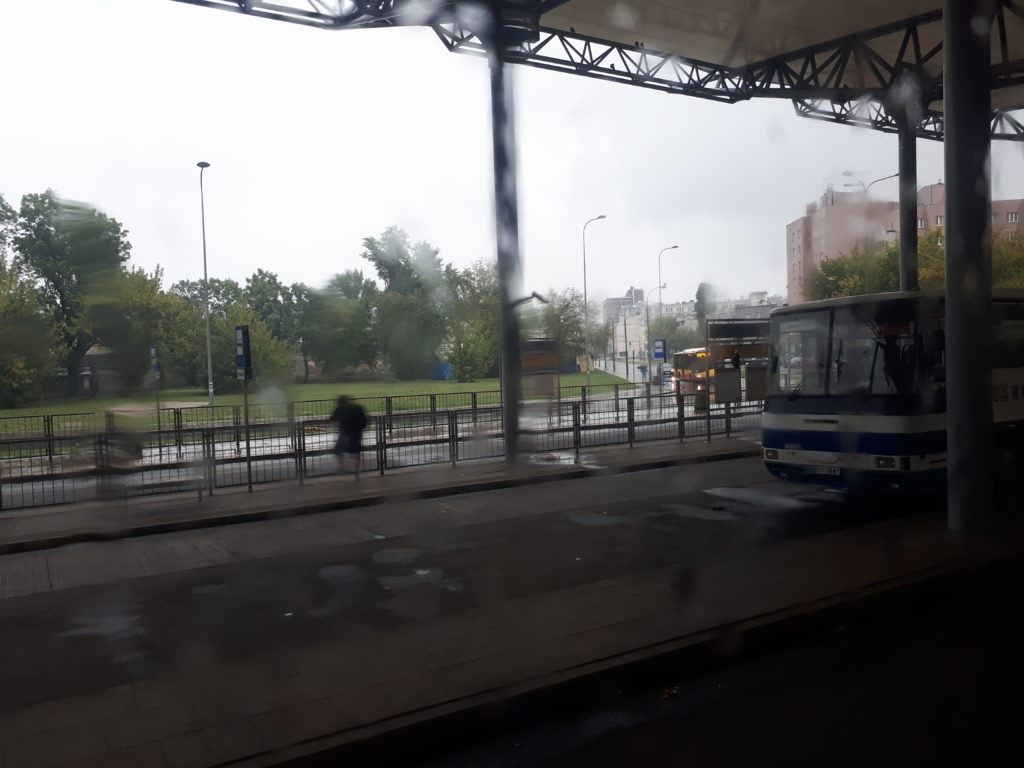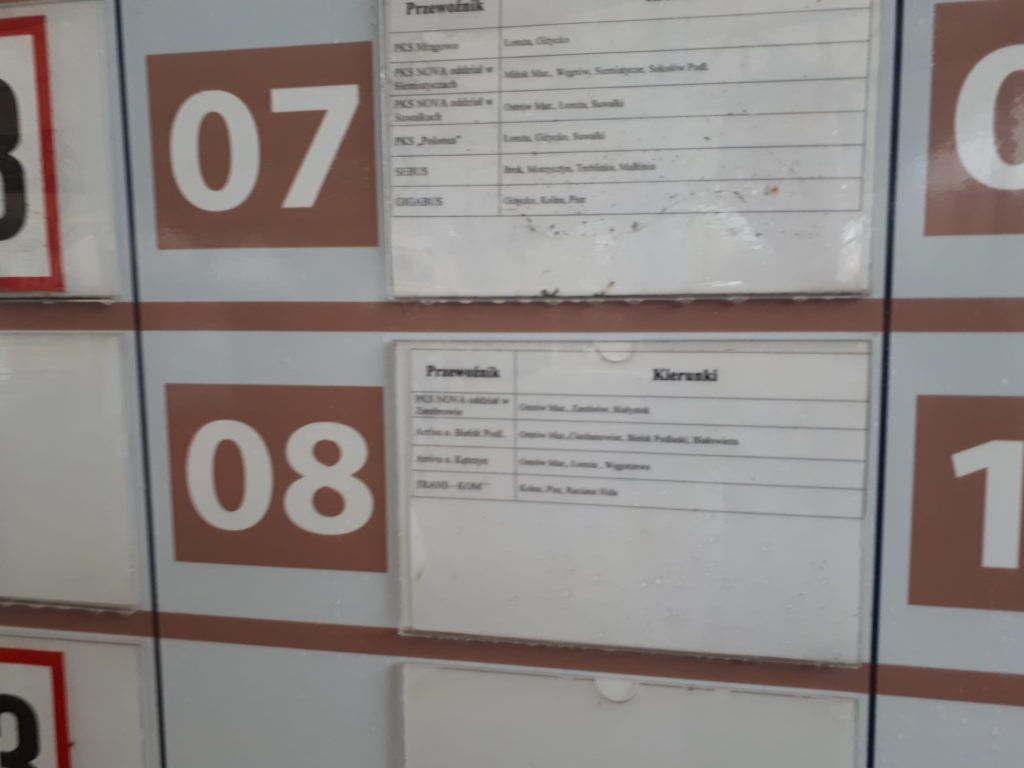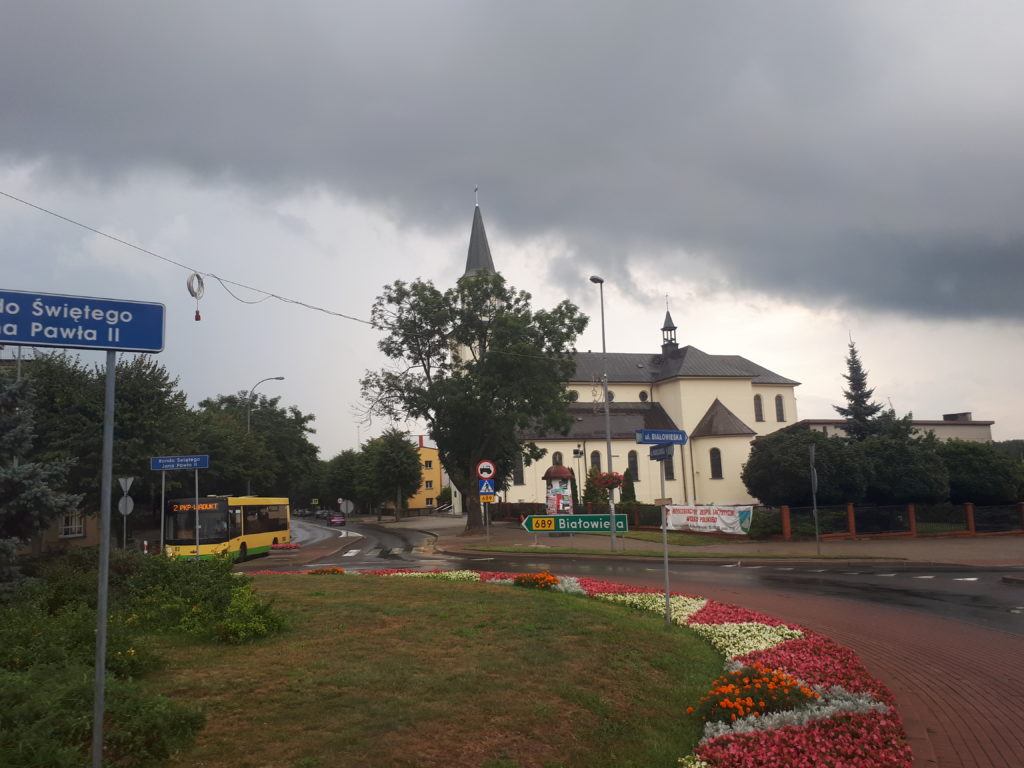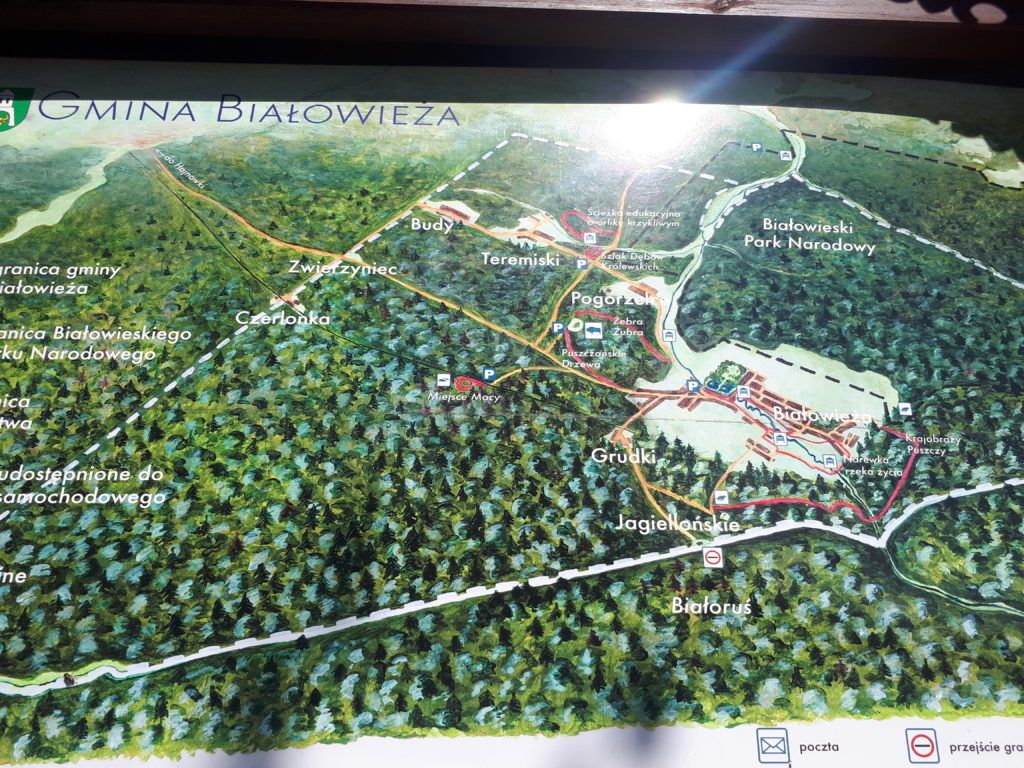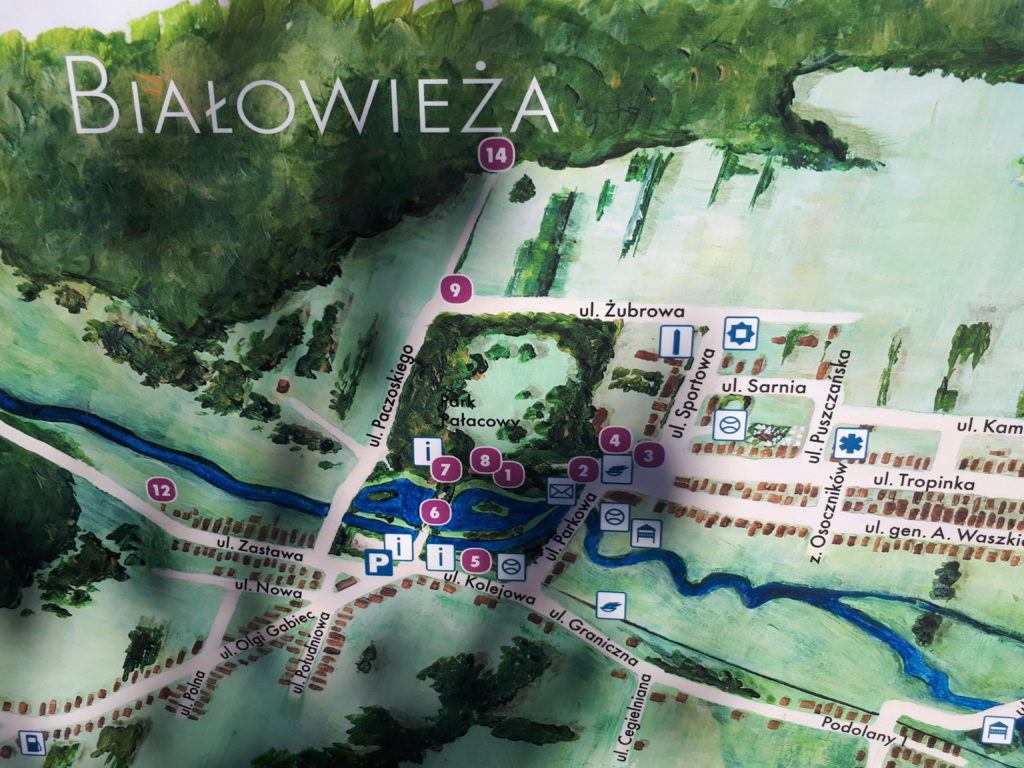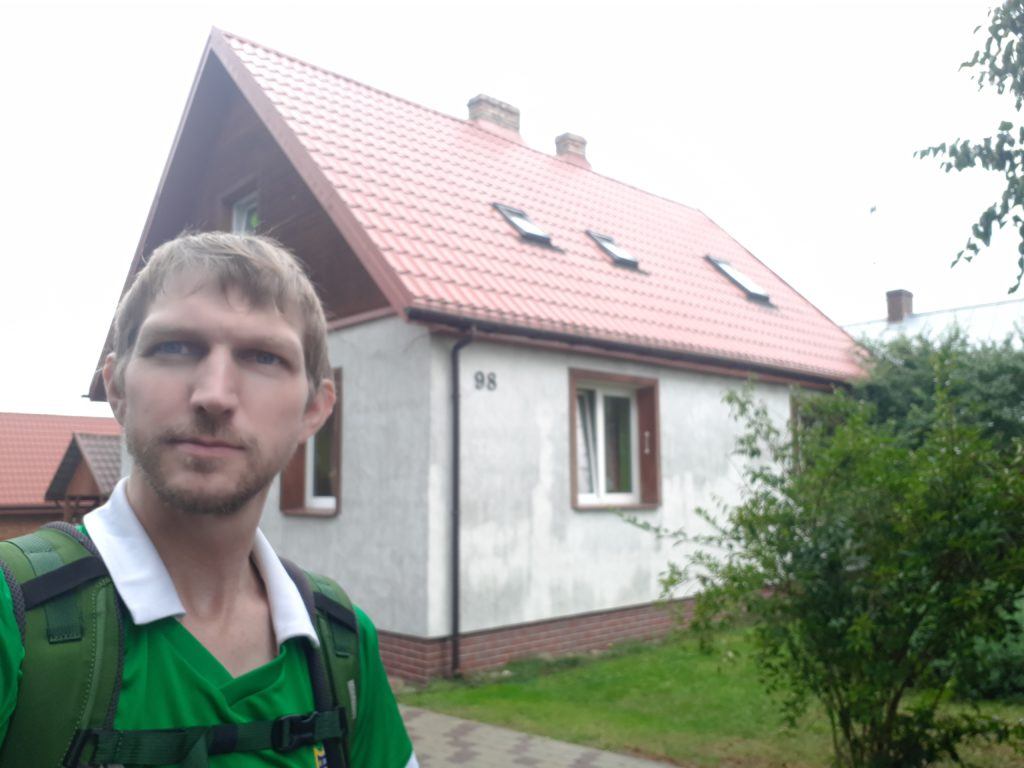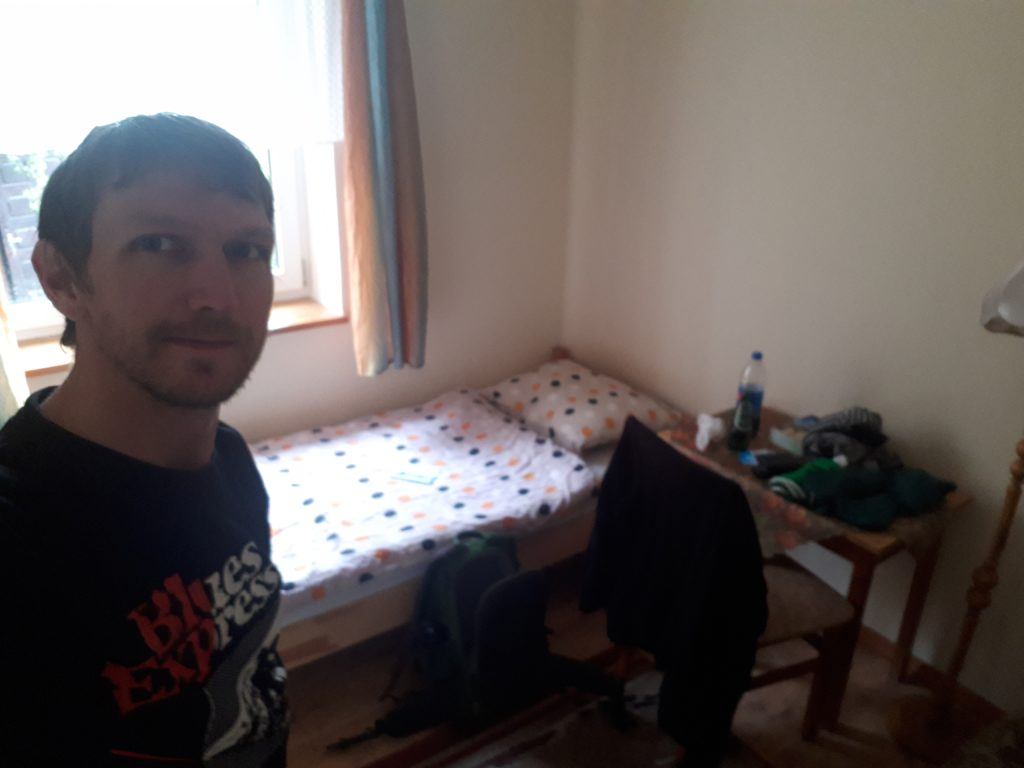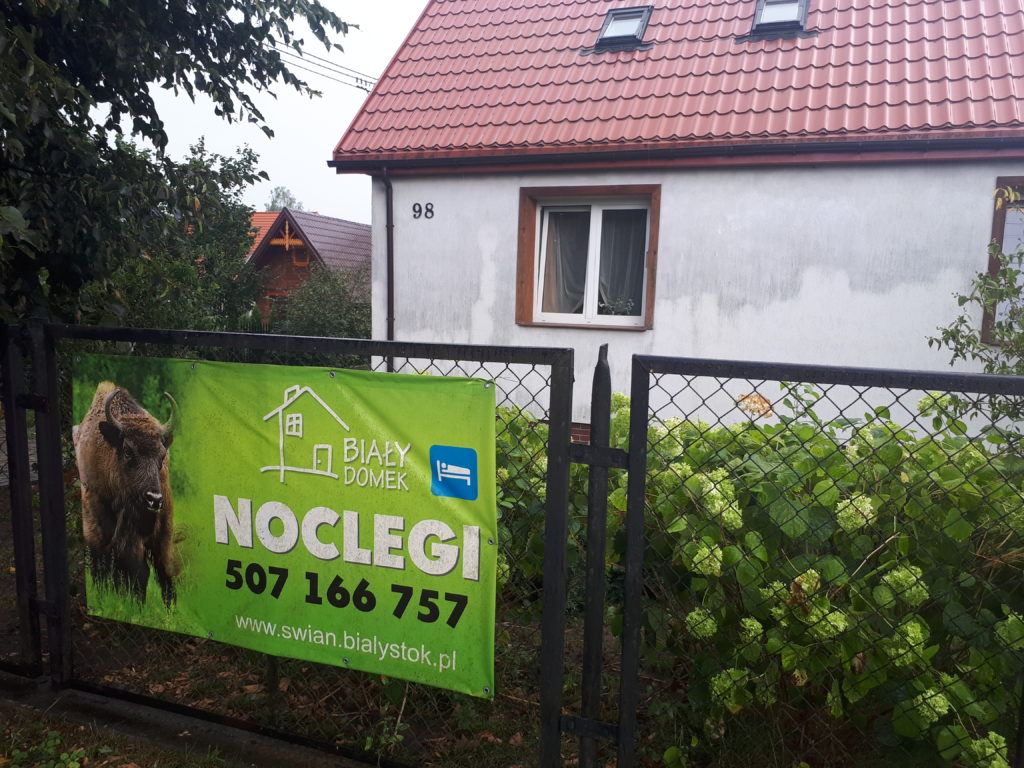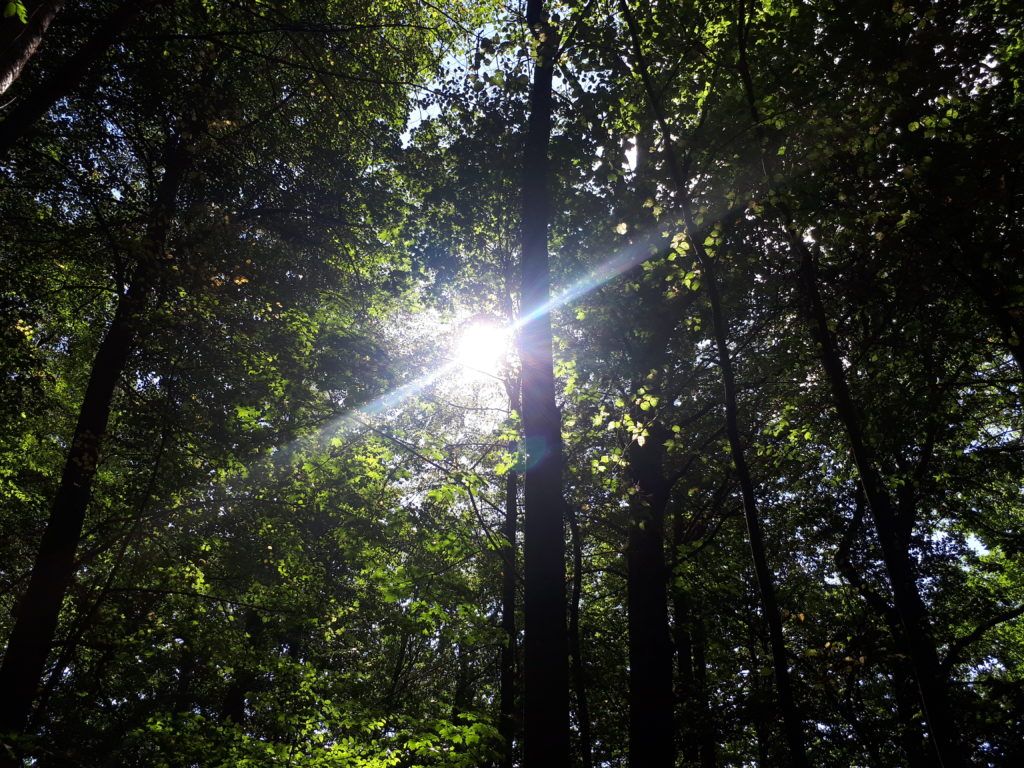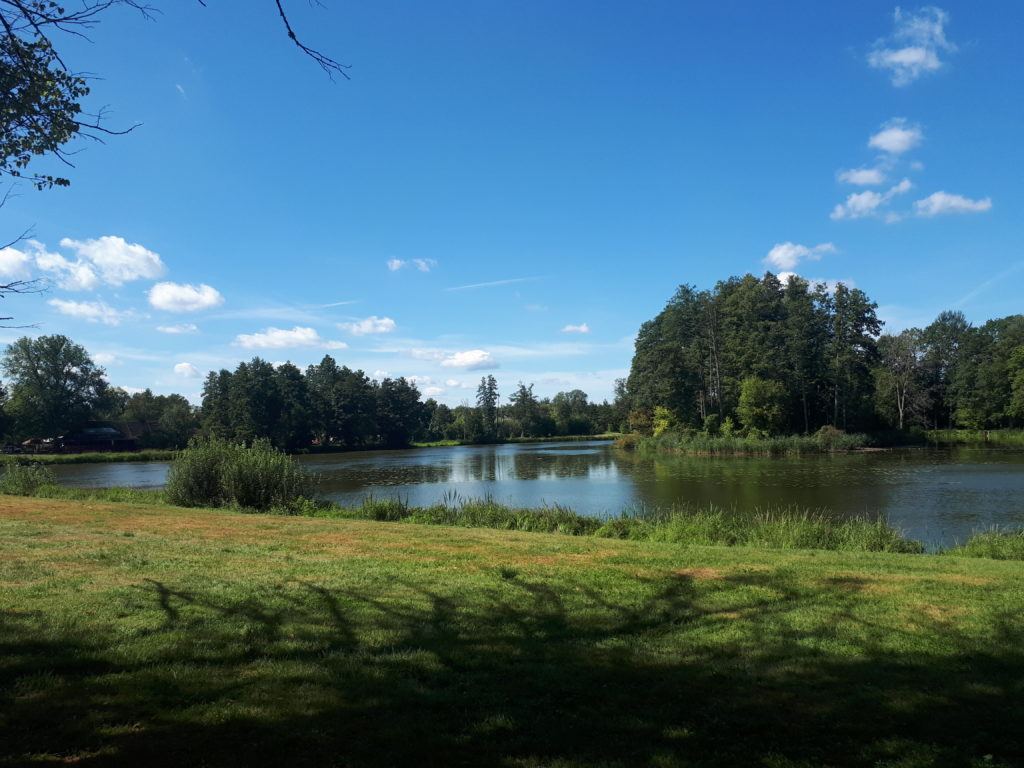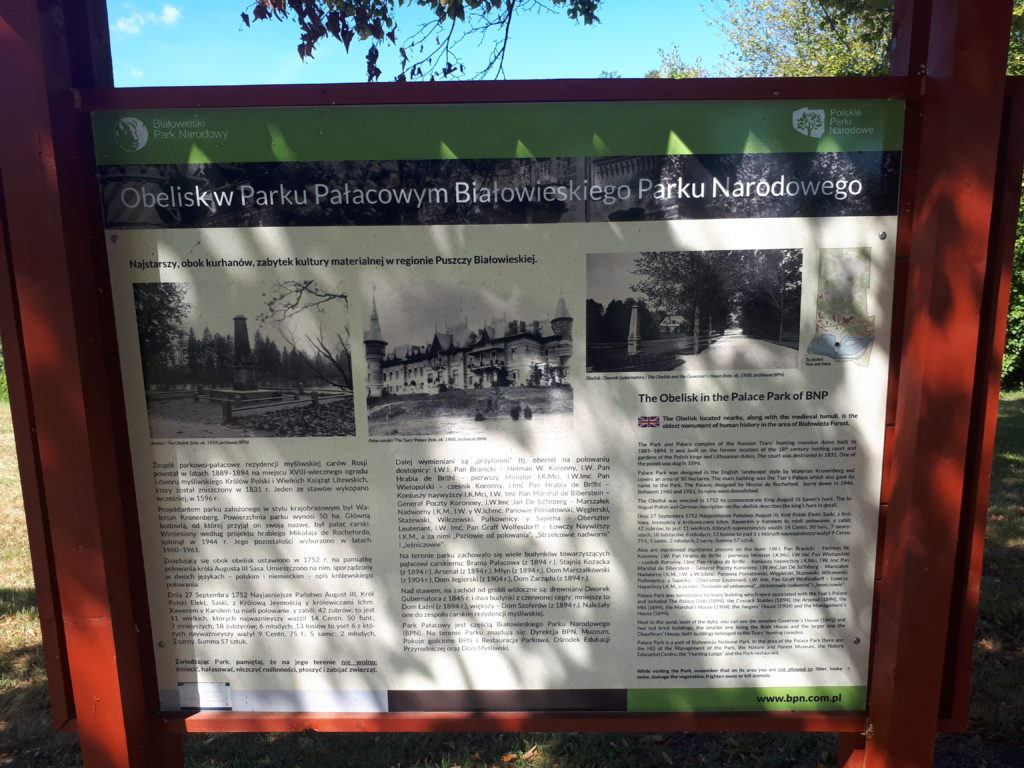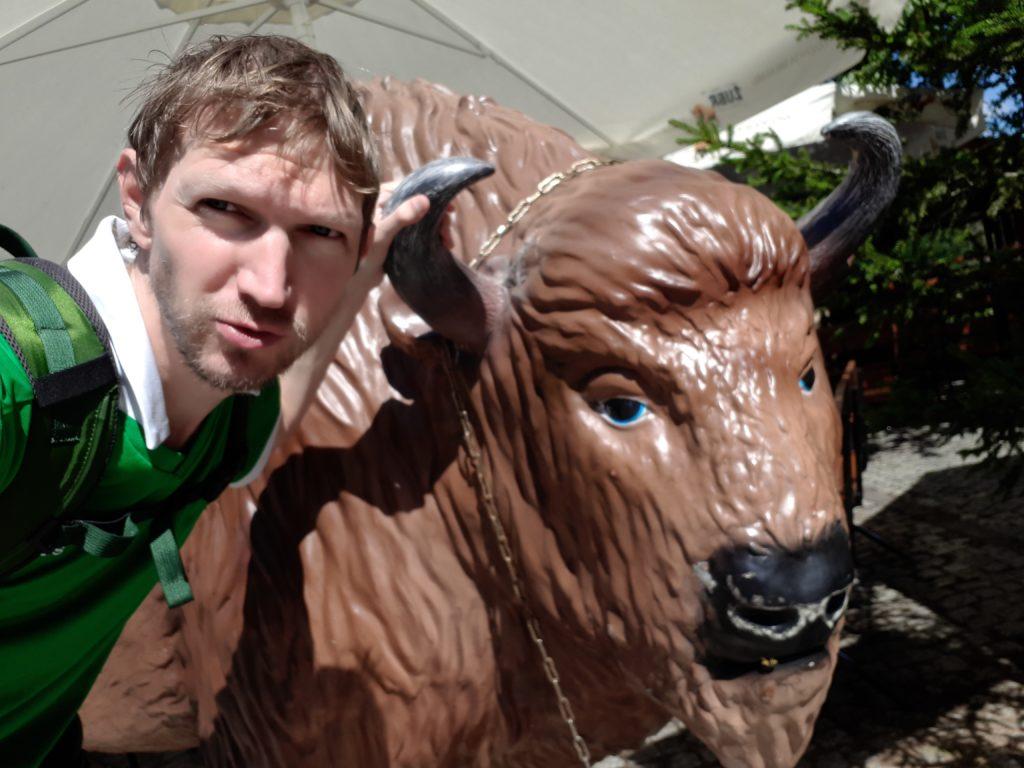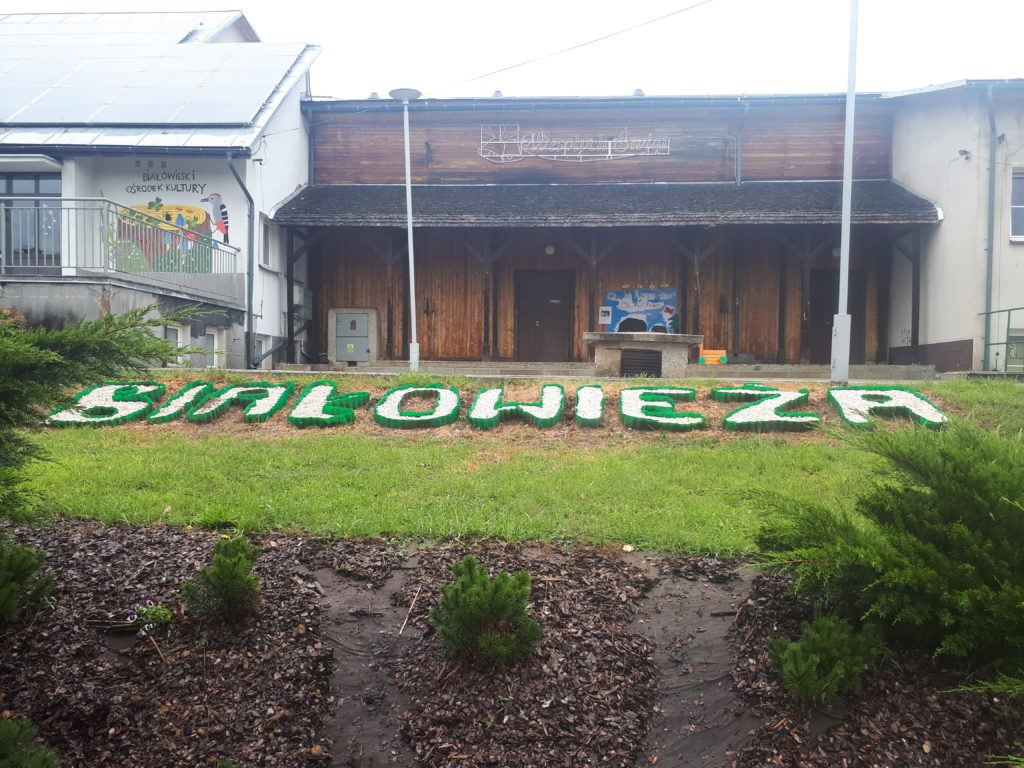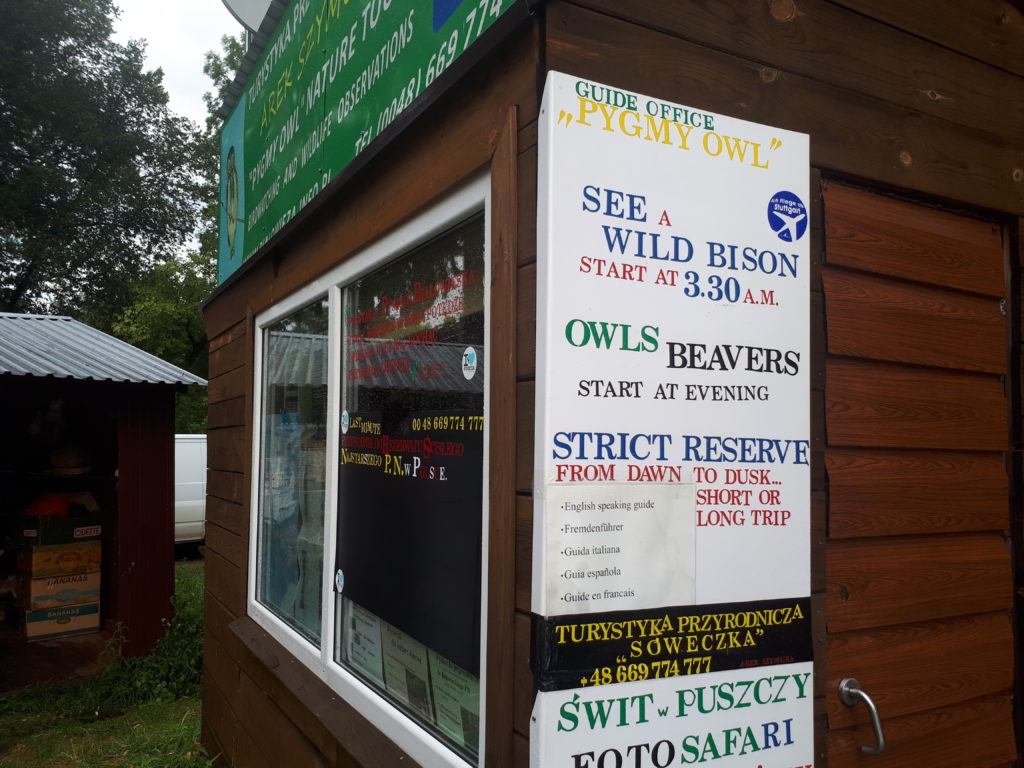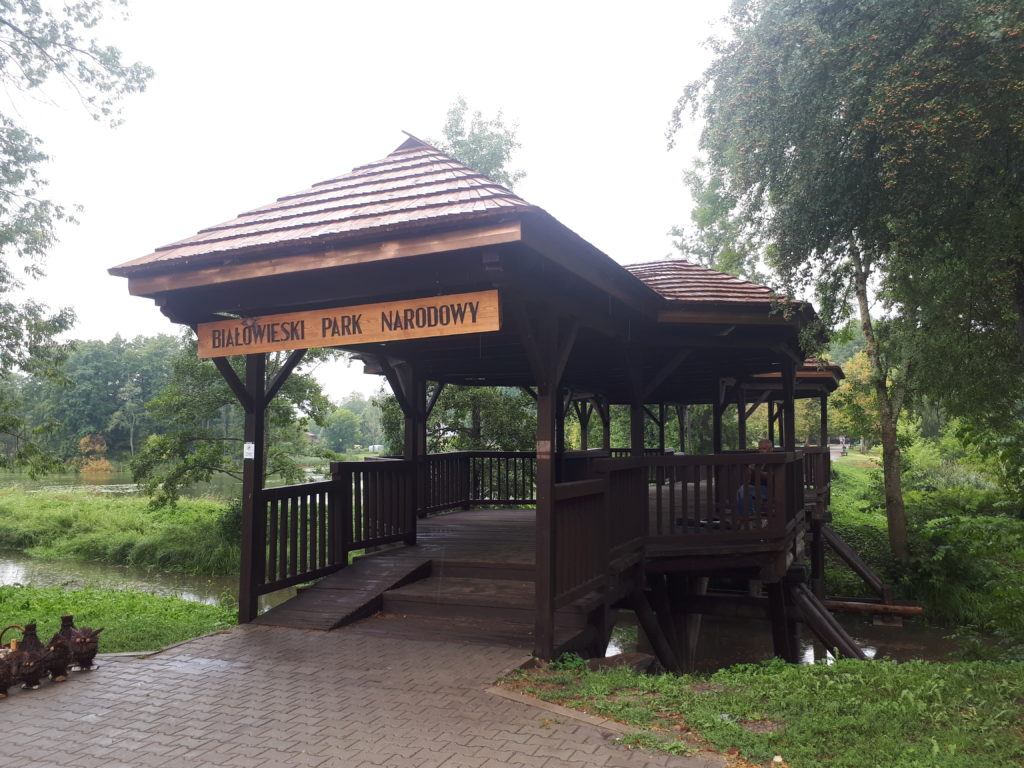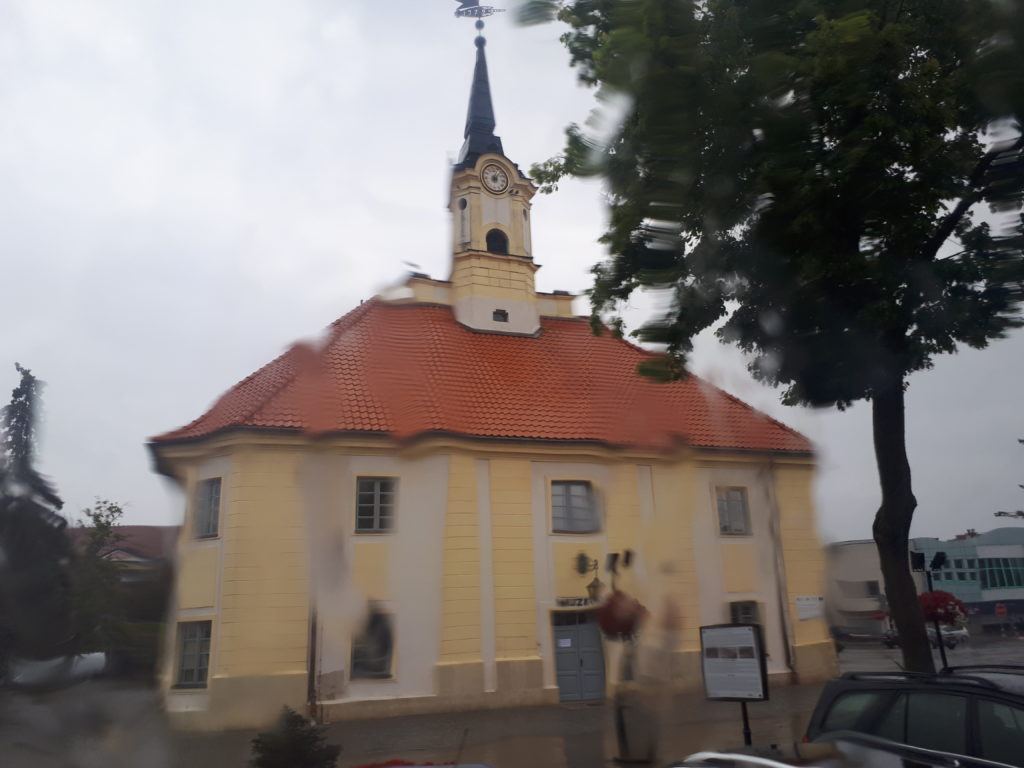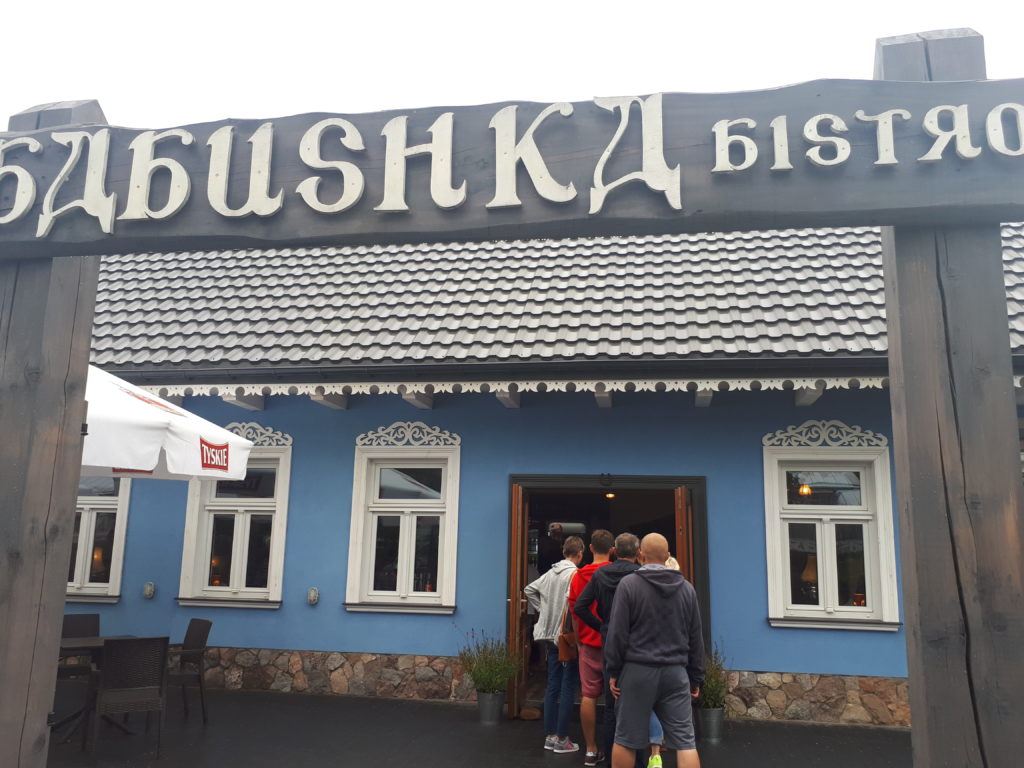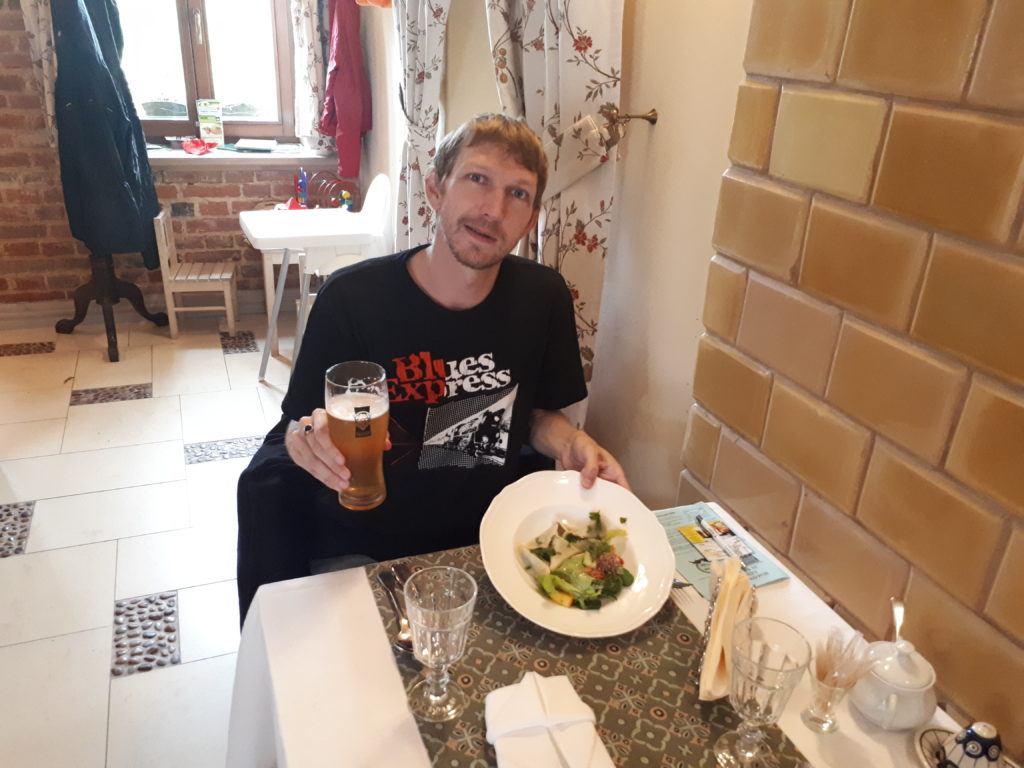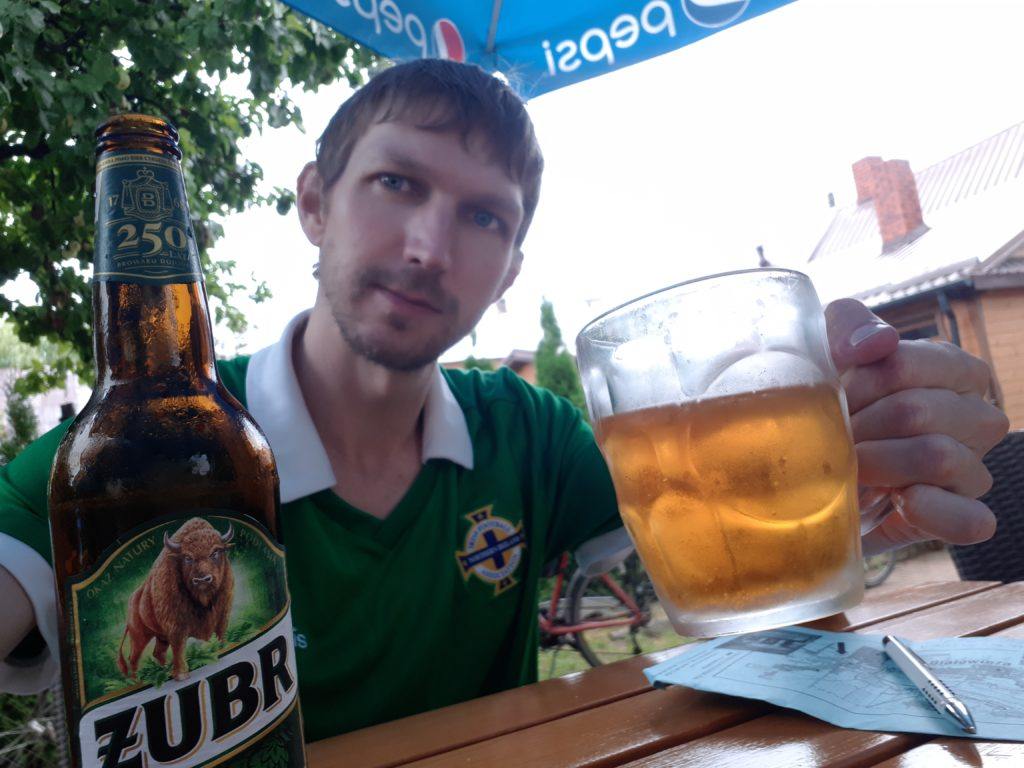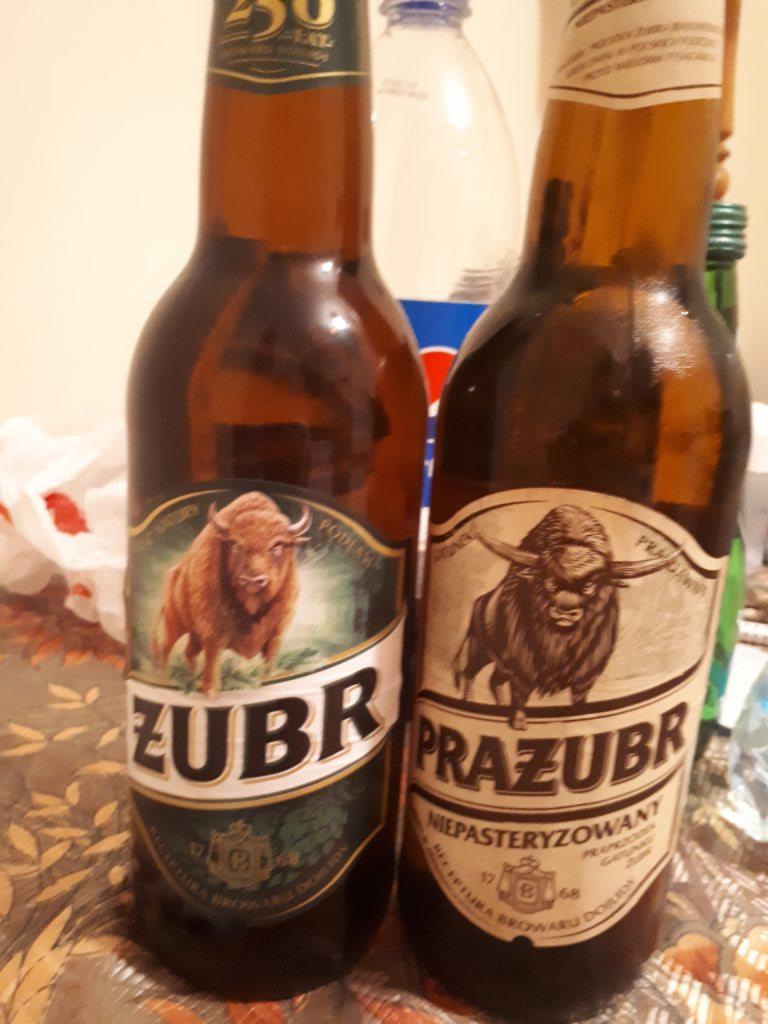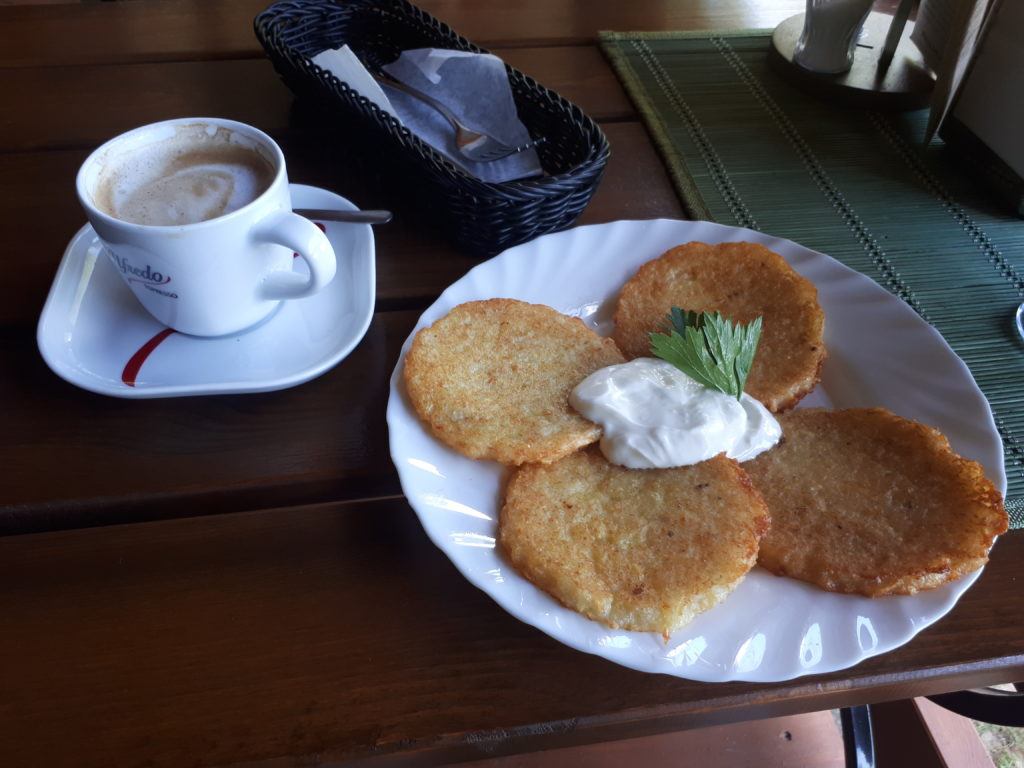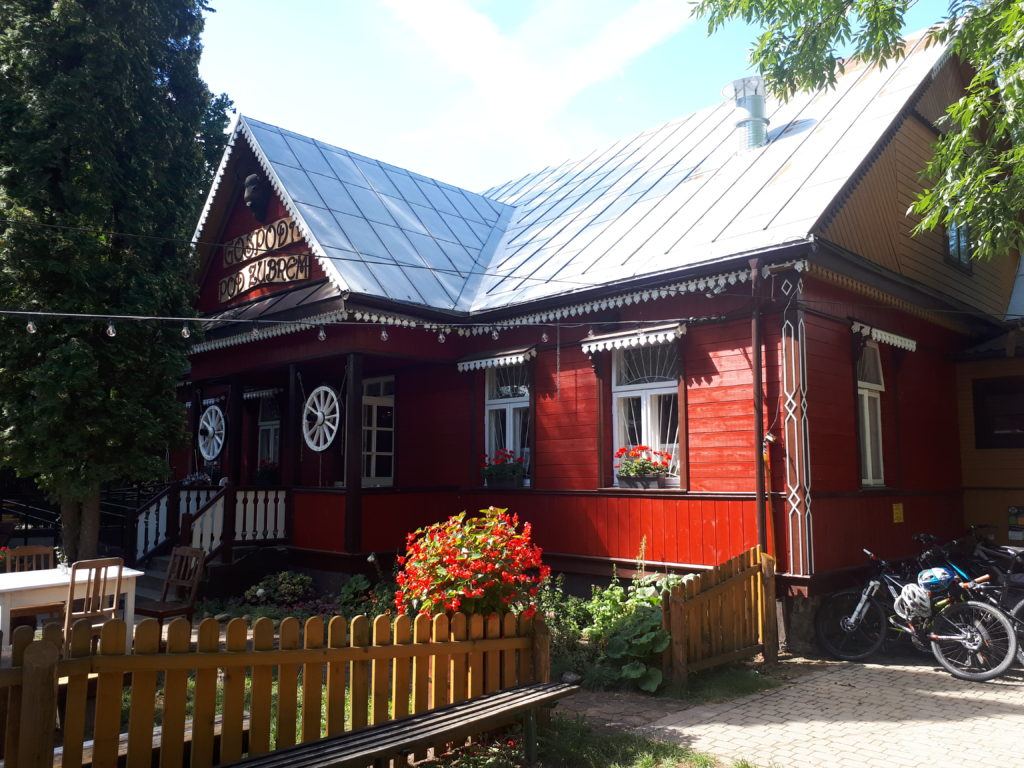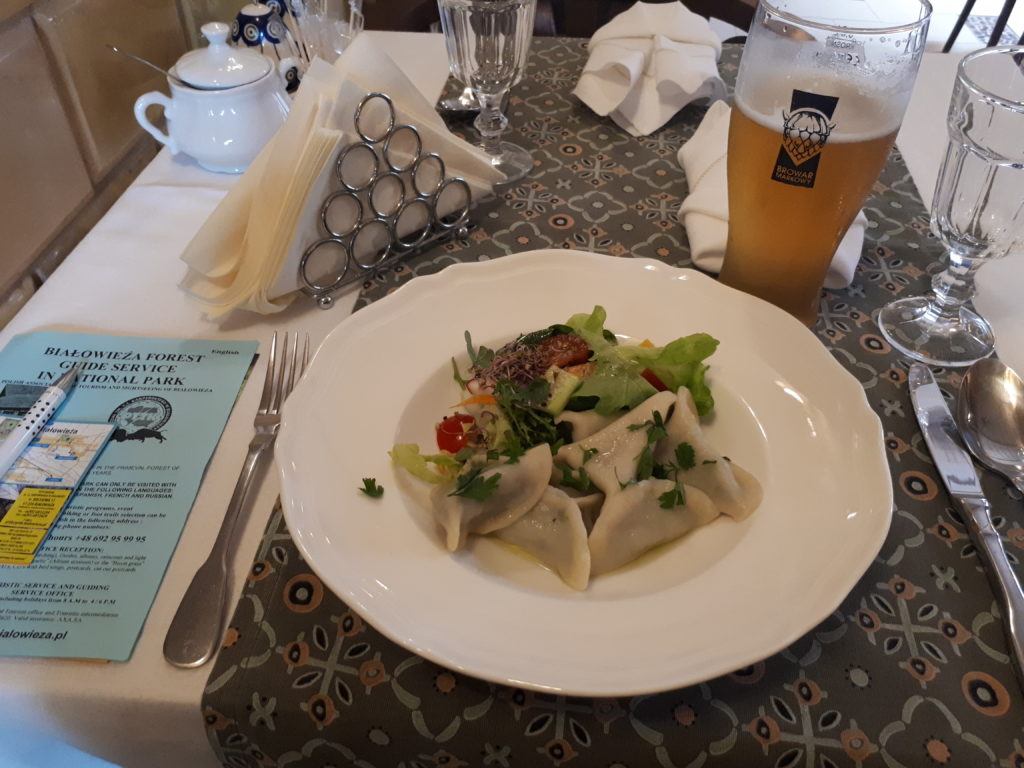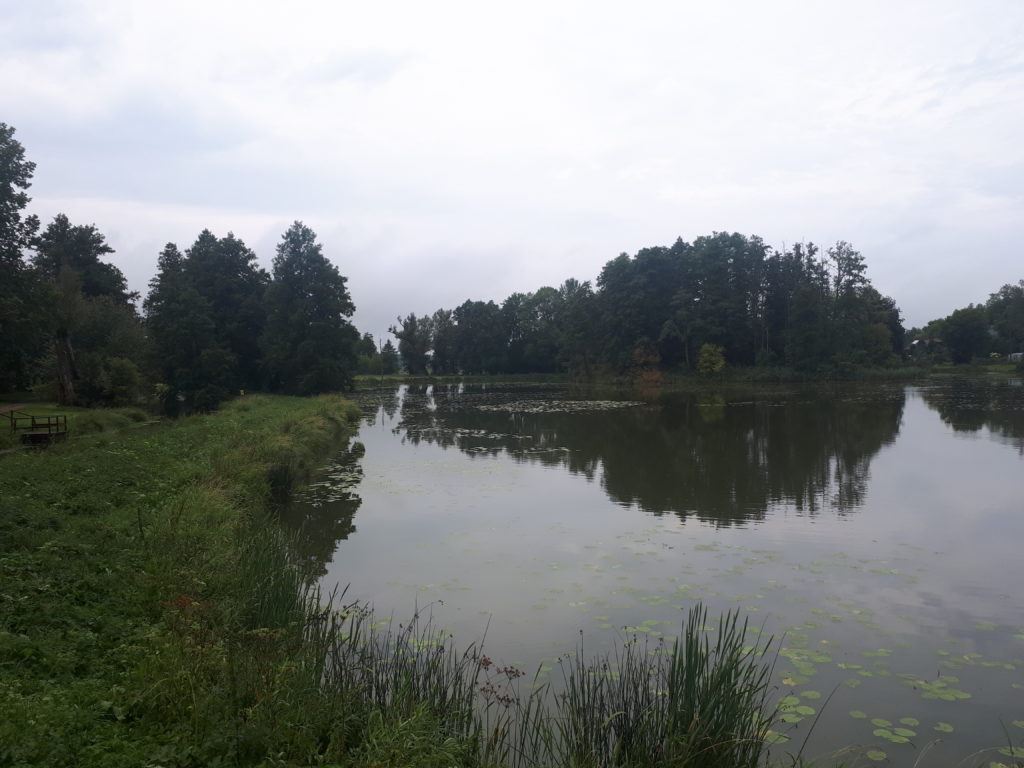Spanning an area of 152.5 square kilometres, Białowieża is often described as Europe’s last primeval forest. The forest spans the border between two countries – Poland and Belarus and makes for an intense and epic wilderness experience for those intrepid tourists keen to explore Mother Nature at her most beautiful. In 2018, I aimed to have visited every UNESCO world heritage site in Poland and so this one was on the list – I headed mid August on a bus from Warszawa to the village of Białowieża. Once here, get ready to come face to face with breathtaking untouched landscapes, wild roaming animals and rare plant species as you delve deep into one of Poland’s most underestimated tourist spots.
A Brief History of Białowieża Primeval Forest
This colossal primeval forest and national park has an intriguing history. Polish kings roamed and hunted here back in the 16th century, building palaces on the edge of the park. At the time, local people were not allowed into the territory of the national park. The forest had so many resources to offer such as wild animals for hunting, trees for firewood and plants that had edible forest fruits. The park was strictly guarded by Poland’s Bourgeoisie back then, and these days such protection of the park and its resources still exists. Except of course that visitors are now most welcome, and are flocking in their droves.
Białowieża National Park is often dubbed as “the last untouched wilderness of Europe”, with deep inner parts of the forest still not destroyed or altered by the presence of man. However, parts of the park have naturally changed slightly down the years, due to human intervention and activity but as things stand, Białowieża is still one of a kind and deserves to be seen.
These days, in the post-communist tourist boom, both Belarus and Poland include it as a National Park; Belarus calling their side ‘Belovezhskaya Pushcha National Park’ and Poland calling their side ‘Białowieża National Park’. In 1979, the entire park was dubbed ‘Białowieża Forest’ and added to the list of UNESCO world heritage sites, making it the third place in Poland and the first place in Belarus (then USSR) to be included on the list. Now you know some of the history, get ready to explore…
Getting to Białowieża Primeval Forest
The village of Białowieża is the gateway to Białowieża Forest but it doesn’t have a train station or an airport. Nevertheless, you are still left with quite a few options in terms of getting here. Hiring a car is an easy way to get to Białowieża. Unless you are arriving from Belarus, you will need to follow the 689 road east from Bielsk Podlaski to Hajnówka and then continue east to Białowieża on the same road.
But I went by bus and this is the route I recommend. If you are coming from Warsaw, there are regular direct buses to and from Białowieża, normally twice daily (in both directions) and operated by the Arriva company. The buses take around five hours, with a few stops on route (including in Bielsk Podlaski). All buses leave from the East Bus Station in Warsaw and arrive in the centre of Białowieża village. The east bus station is called “Warszawa Wschodnia” and is on the other side of the train station of the same name.
The bus from Warszawa leaves from platform 8. If you are coming from Białystok, buses are much more regular and take just two to three hours.The buses are also operated by Arriva company. All buses leave from the main bus station in Białystok and arrive in the centre of Białowieża village.On the Belarus side, there are also buses from Brest and Kobryn, but these buses do not cross the border, they will take you only to the National Park entrance in the Belarus part of the forest.
Although tickets for all three routes can be bought on the bus, buy your ticket in advance to avoid disappointment, especially during peak times.
Visa Restrictions at Białowieża Primeval Forest
Białowieża Primeval Forest spans two countries – Poland and Belarus. If you plan on visiting both countries, you will need to ensure you are legally allowed to stay. Most visitors to Belarus require a visa and having an EU passport or being allowed in the EU will not permit you to enter the Belarusian side, so please check with your nearest Belarusian Embassy ahead of your visit. All EU passport holders (as well as multiple other nationalities including Singapore and United States) can enter the Polish side of Białowieża National Park for free and without a visa. Once you have ensured you can legally visit, there are a few other rules to follow. Certain parts of forest can only be visited with a guide and by possessing a special permit. These permits can be obtained from the tourist information office south of the bridge entrance to Białowieża and also from the visitor centre in the main building in Białowieża itself. In the restricted areas and on organised tours, your guide will accompany you at all times.
Sleeping at Białowieża Primeval Forest
Białowieża is a small village so be sure to check room availability in advance especially during peak periods (during Majowka and the summer months) but there are a lot of new homestays and guesthouse options. Check out this list I wrote on the best places to stay in Białowieża which includes the plush Hotel Białowieski as well as the cheap and basic Biały Domek. I chose to stay at Biały Domek (the White House). Camping in the protected areas of the park is not permitted, however there are campsites on the edge of the park set aside for youth groups and large tours visiting the area.
Sightseeing in Białowieża Primeval Forest
The main sight is the forest itself, but you can also tour the sights of the village of Białowieża itself, which include an art gallery, a museum and a few churches. However, you will most likely be aiming to visit the national park and come face to face with nature.
Put simply, Białowieża Forest is home to the world’s largest population of European bison, known in Polish as żubr and often dubbed ‘King of the Forest’. These are the heaviest land animals in all of Europe. To have a chance of seeing these bison, book a tour.
Booking a Tour of Białowieża Primeval Forest
To increase your chances of witnessing bison in their natural habitat, book a tour of Białowieża Primeval Forest, accompanied by a guide. These can be booked online in advance from the official tourist website, or when you arrive at the information centre. As a tip, to actually see a bison, you are advised to book an early morning tour, which start in the middle of the night at around 3 a.m. due to the fact that bison are nocturnal animals. The tour will last between 5 and 6 hours and is on foot through varying terrains. You will be briefed in advance on what to bring with you and what to wear. As everything is in the powers of nature, seeing bison can never be guaranteed, but those who join the tours are seldom disappointed.
Please note that Białowieża National Park has over 10 different types of tours available, including shorter ones, day tours and those which children can enjoy. These include a night-vision tour with binoculars, which begins just before sunset so you can see some animals in the last hours of daylight.
Animals and Birds to Look Out For At Białowieża Primeval Forest
As mentioned, the obvious animal that roams the forest here is the famous Polish bison, but you can also see wild boars, elk, deer, wolves and foxes. Ornithologists will also love the range of bird species in the park which includes woodpeckers, flycatchers and hazel grouse. However, it is the attraction of the tawny owls and pigmy owls which lure many bird lovers in.
Eating and Drinking at Białowieża Primeval Forest
You’ll probably be sleeping in Białowieża village, which has its fair share of bars, cafes and restaurants. For excellent local food (from the Podlaskie region) try the bigos (a meaty stew) or the nalesniki (Polish pancakes) in Kartoszka Restaurant or try the pierogi and craft beer at Stoczek 1929. There are enough bars and cafes to cater for the ever-growing tourist boom.
And finally, make sure you bring warm clothes, insect repellent and protection from the rain and sun. Weather conditions fluctuate in Białowieża, which has highs of 22 degrees in the summer and lows of minus 8 degrees in the winter.

